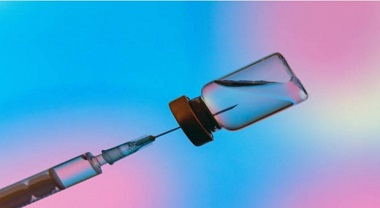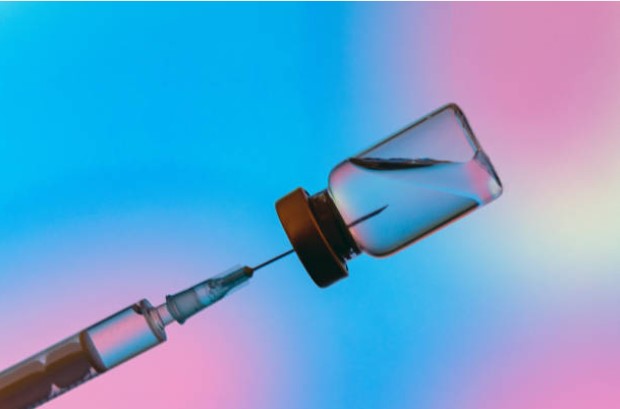Bio Piracy Of Pharmaceutical Industry In India
Bio Piracy Of Pharmaceutical Industry In India”Developed countries exploit biotechnology patents to expropriate the biological or genetic heritage of less developed countries,” according to the term “biopiracy.” Biopiracy is usually defined as the stealing of traditional knowledge that would otherwise be held by indigenous people. Within a single indigenous society, there are several examples of significant applications of local flora or animals. Corporations may become aware of these applications and want to patent and market them for their own benefit. Companies frequently try to patent indigenous knowledge, as well as the products and processes produced from it. As a result, the patentee may obtain substantial monetary recompense for their patent rights while the indigenous group receives no benefit.
[Image Source:gettyimages]
Bio piracy in the Pharmaceutical Industry
Pharmaceutical corporations are among the most common perpetrators of biopiracy, owing to the medicinal character of much traditional knowledge. Consumers frequently have drug allergies or just want to avoid the negative side effects of such medications. As a result, the market for traditional knowledge-based pharmaceutical treatments is expanding, and pharmaceutical companies are looking to capitalize. Traditional cures for prevalent medical ailments are routinely discovered by these companies, who then commercialize and patent various forms of such remedies for their own advantage. Thousands of patent applications are filed each year at the USPTO [United States Patent and Trademark Office] that are related to conventional knowledge in some way. A few of the most well-known examples of pharmaceutical biopiracy are listed here.
Cases of Bio piracy in the Pharmaceutical industry
These examples demonstrate the complexities of the issues, differing cultural perspectives on traditional medicine commercialization, and the patent system’s limitations in resolving these conflicts:
Kwaokrua: The Thai herb Kwaokrua has been utilised for almost a century, and its medicinal properties were first mentioned in Thai texts in 1931. Certain plant-produced hormones, on the other hand, have only recently been discovered in the plant. In modern medicine, these hormones have been used to improve male sexual performance, expand and firm breasts, and firm the skin. For some of these uses, a South Korean business holds a patent in the United States on an extract from kwaokrua. The Thai people are concerned because the extraction processes revealed in the patent are identical to those utilised by traditional medicine practitioners for nearly a century. Publications describing this approach, however, were not considered prior art for the US patent. Threats of legal action have hampered local Kwaokrua farmers, and the plant has been harvested swiftly for commercial purposes, leaving little time for regeneration. Indigenous peoples’ practices relating to the plant’s routine production and use have been disrupted as a result of the award of intellectual property protection in this traditionally utilised plant and its extract.
Hoodia:Hoodia, a native herb, has been used as an appetite suppressant by the San people of the Kalahari Desert in South Africa since ancient times. By suppressing their appetites with Hoodia, they were able to go on longer hunting journeys with fewer supplies, boosting the hunt’s productivity. The San people have received royalty payments from global pharmaceutical companies selling Hoodia-containing pharmaceuticals under the terms of an international convention known as the Convention on Biodiversity (CBD). However, substantial doubts about the fairness and legality of such profit-sharing arrangements persist. 46 Furthermore, because the United States is not a party to the CBD, earnings derived from the exploitation of US patents on Hoodia help the San people in no way.As a result, multiple patents incorporating the San people’s indigenous Hoodia knowledge have been awarded in both the United States and Europe, with the San people receiving little or no benefit from the sales of products covered by those patents.
Madagascar rosy periwinkle: Another example of a pharmaceutical firm reaping the benefits of Eastern medicinal plants is the marketing of the healing capabilities of the Madagascar rose periwinkle. The plant had been utilised in traditional medicine by indigenous populations in Madagascar and elsewhere for a long time. Eli Lilly & Company was inspired by the usage of this plant in traditional medicine and identified two components that give it its therapeutic properties: vinblastine and vincristine. These extracts are currently employed in cancer-treatment medications that the company sells. The pharmaceutical company Eli Lilly makes roughly $100 million a year from these treatments, yet the indigenous peoples of Madagascar are not compensated. Despite the pink periwinkle’s alleged misuse of Malagasy culture, Malagasy healers never employed it for the purposes that Eli Lilly proposes. It was primarily used to treat diabetes. Eli Lilly may be able to get patent protection under the America Invents Act because they exploited the plant to create novel chemicals for new medicinal uses. However, the new Section 102’s broadened breadth of prior art will have an influence on Eli Lilly’s ability to patent these types of inventions. Because of the Malagasy use, businesses like Eli Lilly may be forced to restrict their patent claims to solely cover the new innovation. As a result, even if previous art does not completely preclude new inventions, its evaluation may have an impact on the scope of new patent claims.
Effects of bio piracy on the pharmaceutical industry
The most common complaint of for-profit firms appropriating indigenous medical expertise is that it is simply unfair. Pharmaceutical firms are allowed to make millions of dollars in sales from some traditional treatments, according to these critics, with little or no compensation to the indigenous knowledge holders. The perceived unfairness of patenting a treatment that had been used to cure wounds in India for hundreds of years was a major point of contention for opponents of the Turmeric Patent. It was also a problem with Eli Lilly’s utilization of the Madagascar rosy periwinkle, which brings in $100 million in revenue each year.Ironically, patenting traditional information may result in the selling of products incorporating traditional knowledge at monopolistic pricing to traditional knowledge holders. However, in order to benefit from the monopoly that a U.S. patent would give, such sales would have to take place within the United States. Individuals and businesses can be blocked from using knowledge that they have been using for centuries, which is the most heinous case of traditional knowledge abuse. An American patent does not restrict the patented invention from being exported to other countries, but it does prevent the importation of things that contain the claimed invention into the United States.Many such entities in countries that serve as sources of traditional knowledge have been barred from exploiting that information due to the possibility of legal action. Threats of legal action, for example, have hindered local production of kwaokrua, despite the herb’s long history of use by Thailand’s indigenous people. Individuals and businesses in India have been utilizing neem tree extract to repel insects and bacterial infections for generations. W.R. Grace & Co. wanted to force Indian companies producing neem-based products to licence its technology after receiving a patent on a variant of this extract.Local businesses were concerned that the patent would prevent them from exporting goods to the US market, raising the price of neem seeds. The neem patent denied Indian enterprises the capacity to export some neem-based products to the world’s largest economy, denying Indian people the opportunity to benefit from their indigenous expertise inside the global economy. This sparked a worldwide effort to get the patent revoked. The utilization of traditional knowledge among indigenous peoples may be diminished if patent protection is granted to ideas developed from traditional knowledge.Patenting traditional remedies is not only unfair to indigenous knowledge holders, but it is also unfair to the general public, who provides the “inventors” of these treatments the power to exclude others. Inventors are granted patent protection in exchange for a societal benefit. Inventors agree to expose their findings to the public via the patent specification in exchange for the public granting them an exclusive right to utilize those discoveries for a set period of time. In this way, the protections afforded by patent law benefit both the inventor and the general public. When the discovery to be released is already known to the public, however, this paradigm falls down. If the invention has been used publicly for thousands of years, there is no benefit to the public in granting the patentee the exclusive right to exploit it. When well-known traditional knowledge is patented, there can be no quid pro quo, and the public does not get the benefit of its bargain.
Measures taken by governmental entities and international bodies
Biopiracy has been fought for a long time and has had some success. Two Indian researchers at the University of Mississippi secured a patent for using turmeric in wound ointments in March 1995. The plant is native to South Asia and is commonly used as a spice in both fresh and dried versions. India’s largest research and development agency, the Indian Council for Scientific and Industrial Research, has filed a lawsuit against the US Patent Office. The plaintiffs claimed that turmeric had been used in India for millennia to treat wounds and rashes, and they cited an ancient Sanskrit scripture to back up their claim. In consequence, the US Patent Office revoked it, as well as other turmeric-related patents.
The Nagoya Protocol, which is part of the Convention on Biological Diversity (CBD), was accepted by the United Nations in October 2010. It is a legally binding international pact that tries to distribute income from resources, such as medicinal plants, in a way that benefits the populations that first used and farmed them.
However, this legally binding agreement has yet to be enacted. Lack of implementation is a grievance that can be directed against the EU, which is one of the Nagoya Protocol’s signatories. Only 15 countries have incorporated the agreement into their national legal systems, and none of them are EU members. It must be implemented by 50 countries in order to gain global binding status. However, several non-governmental organizations (NGOs) are skeptical that the protocol will prevent clear cases of biopiracy in the EU’s 27 member states in the future, citing flaws in the EU’s draught directive for implementing the agreement. It does not, according to critics, contain new regulations for granting patents. Those seeking patents should be required to show where the new materials came from and how they were obtained in a fair and legal manner.
Conclusion
According to some pharmaceutical businesses, traditional knowledge can cut the search from one benefit in ten thousand samples to one benefit in every two samples. This knowledge could be quite beneficial. Regrettably, those who could most profit from the benefits are the ones who are least protected. Obtaining a patent on the knowledge would be the only way to gain complete control over it. Due to a lack of resources, this is typically quite difficult for an indigenous population. An indigenous community is unlikely to have the funding or research capabilities to meet the standards. Even with the funding, there are still a lot of possible roadblocks.The issue with the overall system is that indigenous peoples have very little bargaining power in general. They are typically found in impoverished countries with low financial resources. The industrialized countries, with their economic clout, must be the ones to build up a framework to safeguard the rights of native citizens. Governments in developed countries are often opposed to establishing such a system because they now profit from indigenous communities’ expertise. The government has made a number of steps to address this gap, but these steps have not been successfully implemented. As a result, a balance must be achieved that helps both developing and developed countries.
Author: Anuja Saraswat- a student of NMIMS Kirit P. Mehta School of Law (Mumbai), in case of any queries please write back us via email at support@ipandlegalfilings.com or contact us at IP And Legal Filings.


